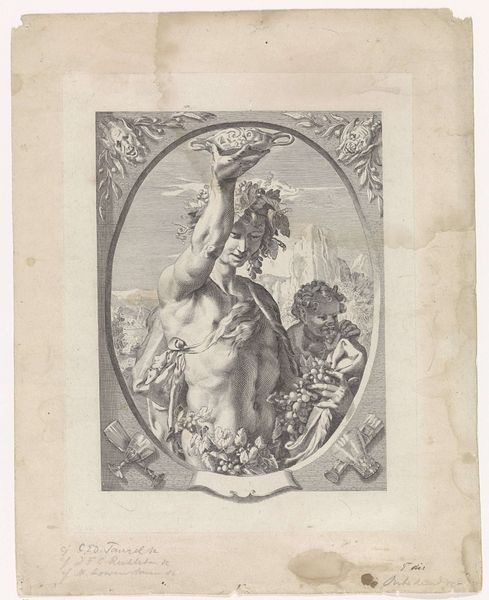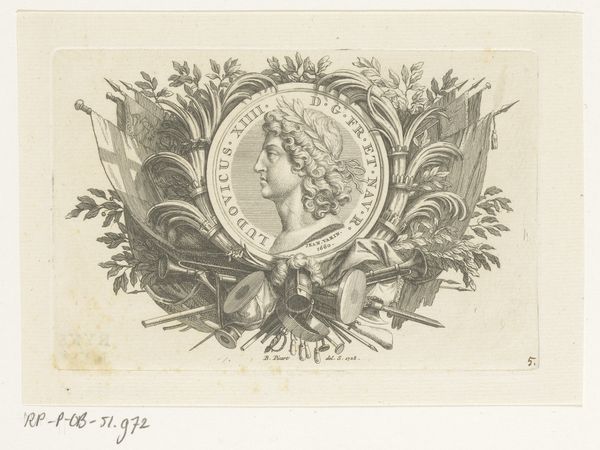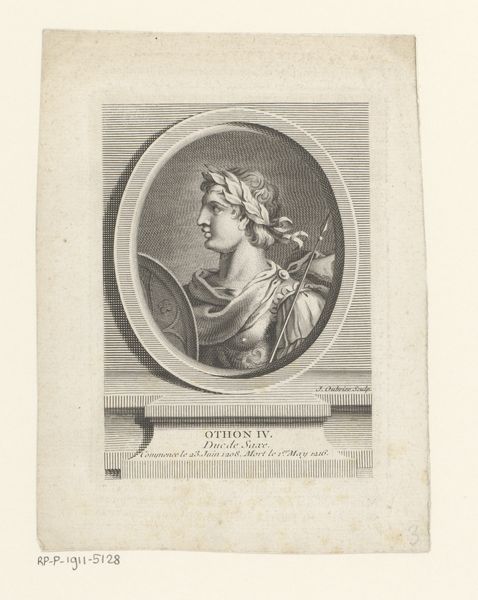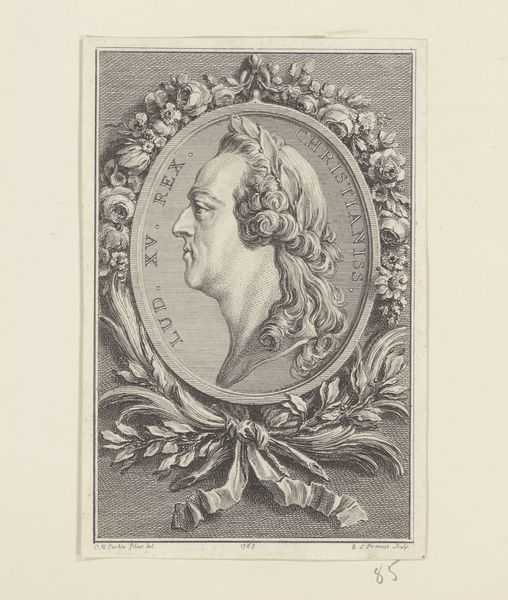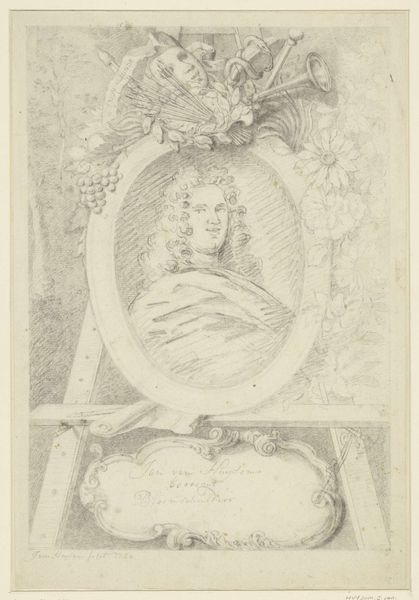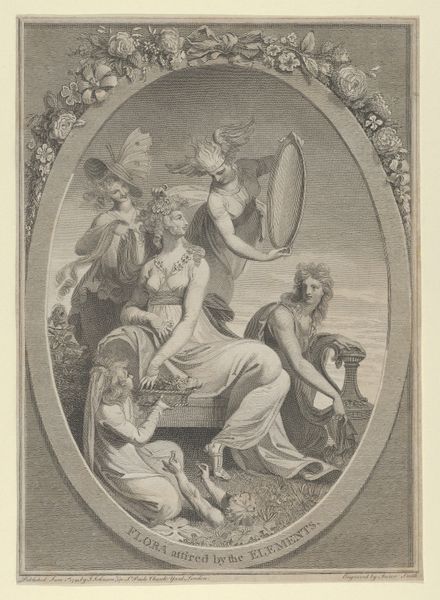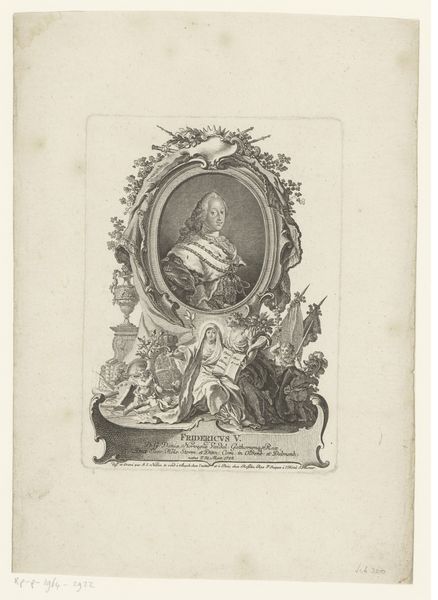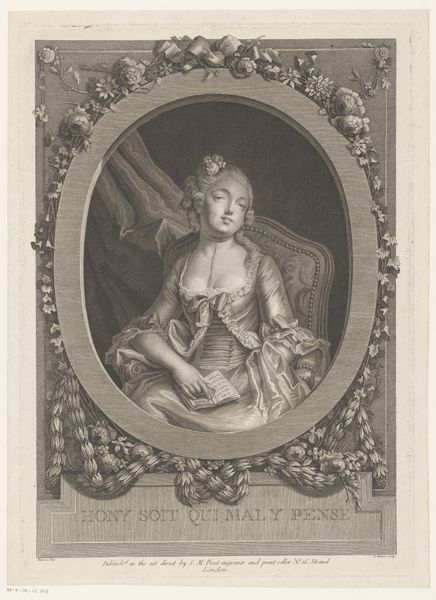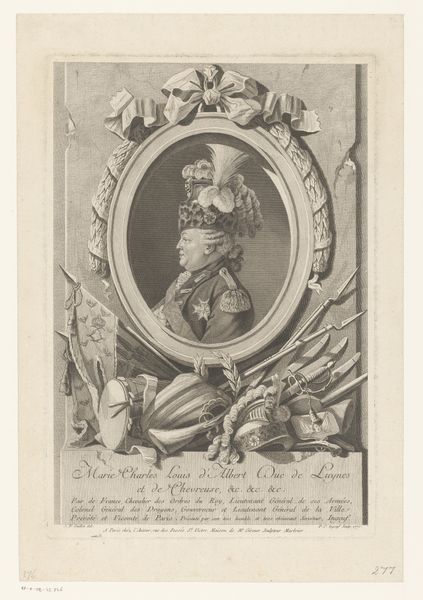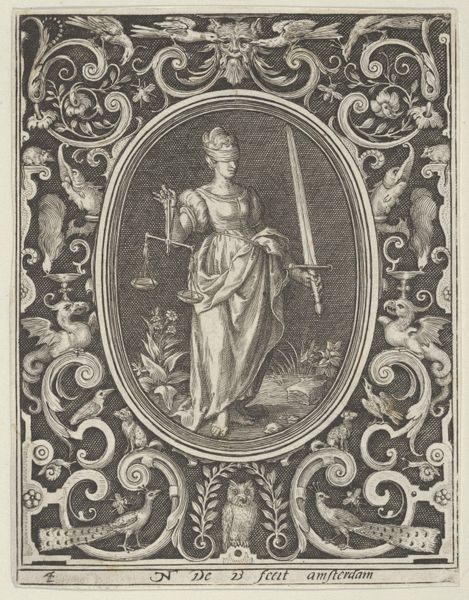
Dimensions: height 145 mm, width 95 mm
Copyright: Rijks Museum: Open Domain
Editor: Here we have Matthias Gottfried Eichler's "Portret van Emilie van Berlepsch," sometime between 1758 and 1818. It's a baroque print on paper. It strikes me as a very formal portrait. What's your take on it? Curator: It's interesting, isn’t it? I see a certain theatricality – that almost aggressively elaborate hairdo, the oak leaves. There's a kind of monumentality even in a print. It reminds me of history paintings... sort of, though maybe a little less bombastic. Notice how Emilie is framed. Why do you think Eichler chose to surround her with those particular motifs? Editor: I see what you mean about the leaves—like she is some ancient goddess, even. I'm not sure about why he chose them... fame? Beauty? Something about her family, maybe? Curator: Yes! Perhaps these elements were meant to signify something very particular about Emilie’s station or perhaps something more personal... Do you think the addition of musical instruments tells us something about her passions? Editor: Ah, good question! The lyre makes it more symbolic, like she embodied music. So it's more than just a likeness, but an idealised image of her. It seems they wished to capture not just what she looked like, but *who* she was. Curator: Exactly! Prints like this were often made to circulate images widely and associate them with particular ideas. Perhaps Eichler had a certain audience or intent in mind. Think about how accessible this piece would have been at the time. Did our impression of it shift? Editor: Absolutely. I initially saw a standard portrait, but now I recognize that there is a whole world of meaning within it.
Comments
No comments
Be the first to comment and join the conversation on the ultimate creative platform.
